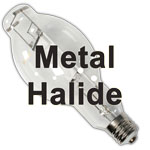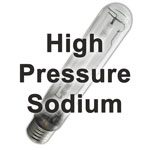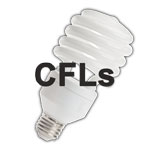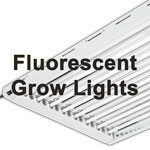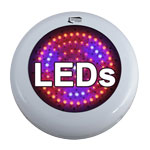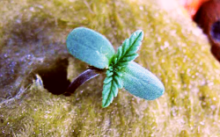You are here13 Things I Wish I'd Known Before I Started Growing
13 Things I Wish I'd Known Before I Started Growing
by Nebula Haze
This list covers some of the things I wish I’d known when I first started growing cannabis indoors. It’s possible that some of the items might not apply to you, but I’m sure every indoor grower ends up learning at least some of these lessons.
1.) The best way to learn how to grow is to just start growing
One of my biggest regrets about growing is that I didn’t start sooner.
It’s easy to get lost with endless research about growing cannabis. Which method is the best? Which grow light for your space? Which method gets the most yields?
The truth is, the best way to learn about growing cannabis is to just jump right in.
Sometimes people (who want to grow) get stuck in the research phase of growing. They spend so much time researching that they get paralyzed by choice and never actually start growing, for months or even years.
No research can 100% prepare you for the actual process of growing. Even experienced growers get unexpected problems. Each grow will teach you more so that you get better and better results, so you might as well start now.
2.) Vent your grow space! You’ll regret letting your grow room get too hot
A lot of first-time growers try to find a way around venting out extra heat from the grow space.
It’s tempting to create a completely enclosed grow space, with no air going in or out. It’s easy and cheap to stick some plants in a closet or box. A closed door or enclosed space prevents the escape of smells, lights and other signs of growing. Might as well just skip the whole venting thing, right?
That’s pretty much what I did in the beginning. In my first grows I put my grow lights and plants in a small, closed closet, with a few fans blowing over the plants to move the air. I figured things would work themselves out. They didn’t. Growing in a completely enclosed space with no venting caused a host of problems.
A hot grow room with no fresh air (or other source of CO2) can have the following problems:
- Heat stress - Leaves start cupping and may become crispy, brown or spotted
- Nutrient Burn - Plants drink more water, which makes plants more prone to nutrient burn
- White powdery mildew - A mold that looks like flour often appears on leaves when the environment is hot and humid without much moving air
- Bugs - You’re more likely to get attacked by certain pests when it’s hot and humid without circulation in the grow space, including spider mites and fungus gnats
- Humidity Problems - If there’s no venting, humidity can build up in the grow space because plant leaves give off water vapor all the time. Small plants have fewer leaves and don’t make much water vapor, but big plants can give off a lot of water vapor as they’re drinking more, and this raises the humidity of a grow space when the air isn’t vented out and replaced with fresh air.
- Buds Don’t Fatten Properly - In a high-heat environment, it’s possible for bud growth (and plant growth) to temporarily stop altogether. This is most common if plants are also suffering from nutrient burn, or if the heat has caused the plant to take up too much nitrogen.
- Possibly Lost Potency, Taste & Smell - Too high temperatures can “burn off” potency, smell and taste from buds - don’t let cannabis plants sit in high temperatures during the flowering stage if you want to harvest the best buds possible!
- Root problems - Too-hot temperatures reduce the amount of dissolved oxygen in water, which can prevent roots from getting enough oxygen. Too much heat makes roots more likely to suffer from several different types of root problems, including root rot.
I know a lot of these problems from first-hand experience because I didn’t vent my first few grows :)
Most of these problems can be prevented by setting up a simple exhaust system to vent the heat and humid air out. This replenishes the grow space with fresh cool air. Plants need a source of CO2 to make energy and grow, and fresh air is the easiest way to get it to them.
Plus your exhaust system gives you the perfect place to place a carbon scrubber which takes smells out of the air, so you don't have any odors outside the tent.
An exhaust system vents hot, humid air outside the grow space

An exhaust system vents hot air out, and allows new, cool fresh air to come in
You don't have to do a fancy exhaust for a small grow. It helps your cause to even just get a strong fan to blow hot air out of your grow space into your room, then use a window fan to blow the hot air out of the room to outside. This is obviously less effective than using ducting (so all the hot, humid air stays together as it's vented out the window), but even a simple exhaust system of fans can make a huge difference in temperature and how much fresh air the plants are being exposed to.
So vent out the extra heat and humidity, add a few fans above and below the canopy for great air circulation, and you’ve got yourself a majorly improved grow space that will yield far better results than the exact same space that used to be enclosed.
Some growers try to supply with extra CO2 because, when done right, it allows cannabis plants to withstand higher temperatures and still be okay. It also requires growers to avoid venting out the grow space during the times they’re supplementing with extra CO2 (otherwise all the CO2 will also be vented outside). But a lot of growers aren’t supplementing their grow rooms with CO2 in a way that actually helps the plants. If you’ve got powerful grow lights and you’re interested in sealing up your grow room to use CO2, learn about the right way to use CO2 here: http://www.growweedeasy.com/co2
Setting up an exhaust is easier than you might think!
3.) Don’t stop taking notes or pictures just because you have problems
 Okay we’ve all been there. Maybe you’ve been writing notes and taking pictures of your cannabis grow.
Okay we’ve all been there. Maybe you’ve been writing notes and taking pictures of your cannabis grow.
But then something happens. Something bad. Maybe a deficiency, root rot, bugs…
Every grower will run into a growing problem some time or another. It can be tempting to stop documenting your grow because your plants don’t look as good as they used to.
Don’t stop! The most important time to document is when you’re having problems.
It has helped me so much to be able to go back and refer to old pictures and notes. It’s impossible to keep everything in your head, especially after several grows, and you will thank yourself later that you kept track of problems instead of tried to pretend they didn’t happen.
Many growers don’t document their grows in any way, and that’s completely fine. But I believe many growers would benefit from a small notebook or calendar to write simple notes. Grow notes help you later, especially grow notes about plant problems!
4.) Know Your Grow Lights! MH/HPS vs CFL vs LED grow lights
MH/HPS Grow Lights
Great Choice for Most Indoor Growers
I believe most new growers would be happiest with an MH/HPS when first starting growing cannabis indoors. They have a reputation for being hot and needing lots of electricity, but most people don’t realize this type of grow lights come in all sizes, even as small as a 150W. That's about the same electricity use as a 40" TV, so it's not going to make a huge impact on your electricity bill.
150W is close to the minimum amount of watts needed for a successful CFL grow, except you will get better results and produce less heat. As long as you have at least 4 or 5 feet of height in your grow space, I recommend going with an MH/HPS grow light over other grow lights. For best results get a "digital," switchable ballast that lets you use both MH and HPS bulbs in one fixture. If you have (or plant to build) an exhaust system with ducting, make sure to get an "air-cooled" hood so it hooks right up.
CFLs & fluorescent grow lights
Great Choice for Short Spaces
I only recommend using CFLs or fluorescent lights if grow space is very short (less than 4 or 5 feet tall). CFLs can be kept just inches from your plants, which means that you don't need nearly as much space for the grow lights as in a traditional setup. This allows growers to use CFLs to grow cannabis in very small spaces, as small as a bucket. CFLs, when done right, also produce top-notch buds, with potency and quality that competes with other grow lights.
I started growing with CFLs, and I was very happy with them. I learned how to grow using them, and they work great for growing cannabis.
But… I didn’t realize when I started how many CFLs I was going to need. I didn’t realize how often I would have to adjust the CFLs (daily) in order to make sure they were going to provide the right amount of light to the plants. I didn’t realize that I would have to rig creative ways of arranging the CFLs around the plant. I didn't realize CFLs weren't right for my space - I had a grow space that was tall enough for an MH/HPS, and I believe the grow would have been easier and more intuitive if I had started with MH/HPS instead of CFLs. The heat and electricity would have been about the same, but it would have been easier and I likely would have produced better yields.
On the flip side, I feel that growers learn a lot more about light and how plants grow when using CFLs, because you end up spending so much time with your plants and adjusting the lights. Plus the quality of CFL-grown bud is great. So in the end I am happy I started with CFLs even if it wasn’t the most logical choice. And you can’t beat the low setup costs (though there are also very cheap MH/HPS grow lights these days that work perfectly).
LED grow lights
Great for growers who want cutting-edge technology & amazing quality buds - but make sure you buy LEDs from a trusted company!
These days some LED models are giving HPS grow lights a run for the money as far as yields. HPS is just ahead of LEDs, but that gap is closing every day. LEDs come in all sizes to fit any grow space, and they almost always have a built-in fan and heatsink to disperse heat away from the lights. What’s more, LED grow lights seem to provide a higher quality of bud in some cases, for example by increasing resin (trichome) production and bringing out the natural taste and smell of the buds.
But there are good and bad LED grow lights. They aren’t all made equal. That’s why I recommend that you only use LEDs only if you’re willing to do research into finding a model that is made and tested for growing a plant like cannabis. Some of the best models of LED grow lights come with a guarantee/warranty, and give you the ability to contact the manufacturer directly with questions like how far way to keep plants from the lights.
Never keep LEDs closer to plants than recommended! LEDs can be incredibly bright and too-close lights may end up giving your plants light burn.
Unfortunately, some LED grow lights can actually hurt your plants. This is most common when LED grow lights are kept closer to the plants than what is recommended by the company that made the light.
But sometimes certain models of LEDs can hurt your plants even if they're kept the correct distance away.
I’ve learned about bad LED light models for cannabis the hard way. When LED grow lights are not made and configured properly for a plant like cannabis, you can end up with a plant that turns brown and crispy, with an assortment of nutrient deficiencies that seem to come out of no where.
For new growers, this can be frustrating because they don’t know what they’re doing wrong, when the real problem is the LED grow lights. Even if buds come out okay (which is often the case, despite how beat up the plant might look), growers often wonder why their plants don’t look like the picture-perfect plants they see in pictures online and in magazines.
When LED grow lights are not made for a plant like cannabis, they can cause leaves to turn brown and crispy, or show nutrient deficiencies for no reason, especially in the cannabis flowering stage
Most especially, growers seem to have trouble with the “UFO” style grow lights that come in 90W or 130W sizes. There’s a lot of shady LED dealers, so make sure to only buy an LED model when you’ve actually seen proof that it can grow cannabis from seed to harvest (a grow journal with pictures, videos and notes is one of the best types of evidence about LEDs these days).
Look what a bad LED grow light can do to the leaves of cannabis plants which were well taken care of by an experienced grower.
This plant was grown under a 90W LED and looked (relatively) green and healthy all through the vegetative stage.
The grower couldn’t seem to figure out why some of the leaves were showing signs of problems and nutrient deficiencies, but it wasn’t until flowering/budding started that leaves began really dying away.
While the buds ended up being good, you can see that the leaves are burnt and crispy. This grower had succeeded in this setup before, and the only difference was the addition of a UFO-style 90W LED light found on eBay.
Here's a closeup of those leaves grown under this poor-quality LED grow light - they seemed to just shrivel and die once the flowering stage started. The buds still ended up being great (though they weren't the prettiest buds).
So while it’s true the LEDs can produce great results and some of the highest quality bud, just go in knowing that you need to do your research, and be aware that you may run into leaf damage or other problems that might actually be caused by your lights.
Always buy LEDs from a trusted company! Don’t pay much attention to marketing claims unless they’re backed up by pictures and growing notes or video. And make sure you’ve seen what an LED does to cannabis in the flowering stage - most LEDs do good in veg, but the flowering stage is when the poor-quality LEDs start to struggle. If you haven’t seen a complete grow journal with a harvest and yields for an LED model, I would avoid it until that information becomes available.
There are great LEDs out there, just don’t get tricked into buying a bad one!
Learn more about some trusted LED companies: http://www.growweedeasy.com/led-upgrade-guide
5.) Pay attention to pH

Proper pH is essential for cannabis plants to absorb certain nutrients through the roots. If the pH is too high or too low at the roots, it can cause the plant to start showing signs of nutrient deficiencies even if the nutrients are physically there. This is because the pH changes the chemical structure of certain nutrients, and the wrong structure can lock nutrients out from the plant.
Soil Optimal pH: 6-7
Hydro Optimal pH: 5.5-6.5 (also soilless mediums like coco coir)
By making sure the root pH is in the optimum range, you will save yourself problems and help plants grow healthier and faster.
Read the full tutorial on pH: http://www.growweedeasy.com/ph
6.) Be aware of your costs; setup, electricity, nutrients, supplements, supplies, etc.
Sometimes your decisions will change once you figure out all the numbers. For example, I initially thought I would save on electricity and startup costs by growing with CFLs instead of MH/HPS grow lights.
While the CFLs were a bit cheaper to get started with, the electricity use was about the same, and I believe I would have gotten faster growth and bigger yields if I’d started with MH/HPS instead. So while the costs were lower with CFLs, so were the yields. Plus it would have been way easier for me to use a MH/HPS grow light.
What are some costs to be aware of?
Grow tents vs Building a Grow box
Grow tents are relatively inexpensive. They look relatively discreet (especially the smaller tents) and provide the tools to create a perfect environment for cannabis plants.
Yet I see many growers trying to construct their own special grow box. If you’re doing it because it’s fun and you love building things, or need a custom setup, that’s great. But I see a lot of growers make their own grow box in an attempt to save money.
Oftentimes, they’ll end up with problematic grows, and by the time they’ve fixed all the problems, they’ve spend as much as it would have cost for a professional grow tent anyway (or more!). Before you dismiss the idea of a grow tent, I encourage you to shop around.
Once you grow in a tent, it’s hard to go back to anything else.
Grow Lights: CFLs or LEDs vs MH/HPS
As explained above, each type of grow light has it pros and cons, and each grow light also has untrue myths floating around. To sum it up…
- CFLs - short space (less than 4 or 5 feet tall)
- MH/HPS - for most growers with at least 5 feet of height and at least a 2’x2’ space. Most efficient grow light when it comes to yields/electricity.
- LEDs - can be good for a small grow since they come with a built-in fan to disperse heat, LEDs may improve bud potency and smell, but just make sure you only buy from a trusted company or your plants may pay the price
Learn more about cannabis grow lights:
http://www.growweedeasy.com/grow-lights
Nutrients & Supplements
Do you really need those fancy bottles, or could you use a more simple nutrient system that costs a lot less? A lot of nutrients come with big claims, especially the expensive ones. But if you use too many nutrients or supplements at once (or mix the wrong ones together), it can unintentionally cause a lot of plant problems.
Many nutrients are overpriced for the benefits you’ll get, especially nutrient systems that target cannabis growers. For first-time growers, you’ll often get better results for less money by sticking to a simple nutrient system from a trusted nutrient company like General Hydroponics or Fox Farms. These companies provide relatively inexpensive nutrients, but they work great for growing cannabis.
If you do plan on adding supplements, try to use ones from the same company and are made to work together. But it’s important to understand that a base nutrient system (usually 2 or 3 bottles) almost always has all the nutrients your plants need to get to harvest.
Learn more about cannabis nutrients:
http://www.growweedeasy.com/cannabis-nutrients
Doing it Right vs Doing it Cheap/Easy
When it comes to growing, you'll get what you put into your grow. When it comes to actually setting up your grow space, you'll often save a lot of time, money and frustration by "doing it right" the first time. That means not cutting corners. Understand the basics of growing. Get good cannabis nutrients and use them according to instructions. Manage your pH to prevent nutrient deficiencies. If needed, control smells in the grow room before it becomes a problem. Take care of temperature and humidity. Basically, try to do things right - you'll thank yourself for it later. By doing things right from the beginning, you'll save yourself time, energy and ultimately money. And you'll harvest better buds, too.
Learn 7 Tips to Growing Top-Shelf Buds:
http://www.growweedeasy.com/7-tips-to-growing-top-shelf-buds
Note: Please - only use money you can spare when you get started growing. If you can’t afford to lose the money, don’t spend it on growing equipment!
7.) Don’t stop your grow and start over because you're not happy with how it's going so far
Even if you end up losing your crop in the fight to save your plants, it’s better to try to save your plants than give up immediately and start over.
First off, a lot of plants that people think are “dead” or “unable to recover” can actually bounce back once you fix the problem that’s hurting them.
Yes, even this plant, which drooped like this overnight after a mistake by the grower, was able to make it to harvest with some intense TLC
Look at the buds this grower harvested because he was willing to fight for his plant. If he had thrown the plant away, this harvest would have been lost.
You usually don’t really learn anything by starting over, and often you’ll find yourself running into the exact same problems again if you never bothered to try to fix it the first time. Whether it’s a terrible nutrient deficiency, bugs, wilting, light burn or something else, as long as the plant is still standing up on its own and has green leaves left, there’s often a chance the plant can recover.
I’ve learned a lot of important lessons trying to save sick plants. There’s nothing more satisfying than seeing a plant bounce back after a bout with death. On the flip side, I’ve seen many growers regret throwing their sick plants away.
In one of my first grows, I let this plant get too tall, and I thought about throwing it away…
This is the Master Purp clone when I got it. Little did I know that this plant would be one of the fastest-growing, stretchiest plants I have ever encountered.
This was the plant just a little over 2 weeks later. I couldn’t believe how tall it had gotten, even though I was visiting my plants every day, I was too inexperienced to know this was much faster-than-average growth. I suddenly realized the plant was more than halfway to the top of my closet, so I topped the plant by cutting off several inches in a hope to make it shorter, and then I set the plant to flowering right away. (Never top your plants just before going to flowering!)
This is what the same plant looked like after it started flowering.
As you can see, I started having problems in all kinds of ways. The plant was too tall and had to be bent to fit in the space, the buds were falling over, the grow lights were not made for a tall plant (remember, CFLs and fluorescent lights are made for short spaces). I did everything I could to try to hold things together. Though I never recommend using cardboard or string anywhere in your grow space like I did in this picture.
But I kept up the good fight, and struggled to help my plant get what it needed until harvest. In addition to all the lessons I learned, I ended up harvesting these colas (along with lots of smaller nugs too).
If I had given up when I realized the plant was too tall, I would have never harvested those buds, which ended up being wonderful. I would have lost all the time I spent in the beginning growing the plant; I would have had to get another seed or clone to start again, and I would have missed the hundreds of lessons I learned, that helped me excel at my next grow.
If you have a sick plant, try to save it before you throw it away! Figure out what’s wrong (and how to prevent the problem) so you don’t have to worry about the problem coming back, and possibly grant yourself an extra harvest if the plant pulls through.
Learn how to fix plant problems here (with lots of pictures):
http://www.growweedeasy.com/marijuana-symptoms-pictures
8.) Be aware of timelines
 It generally takes about 3-5 months from seed to harvest. After that, you need to account for the time it takes to dry and cure buds, which can add a month (or possibly more) to the time before you get to enjoy your buds.
It generally takes about 3-5 months from seed to harvest. After that, you need to account for the time it takes to dry and cure buds, which can add a month (or possibly more) to the time before you get to enjoy your buds.
It’s common to see growers start a grow without realizing how long it will take to harvest. They’ll end up having a vacation coming up, or some other problem that takes them away from being able to care for their garden.
It’s important when starting a new grow to consider whether you’ll be able to be there for your whole plant’s life.
Auto-flowering strains will give you the quickest harvest, and even then you still need to care for your plant for at least 3 months. More about autos here: http://www.growweedeasy.com/autoflowering
If you don’t have at least 3 months to care for your plants, don’t start growing yet!
Learn more about cannabis growing timelines:
http://www.growweedeasy.com/how-long-does-it-take-to-grow-weed
9.) More nutrients does not equal more buds
Growers often refer to nutrients as “food” for plants. And it’s true that nutrients are essential to cannabis growth, but nutrients don’t directly power the growth of buds.
 Cannabis nutrients are more like a multivitamin than food. And just like a multivitamin, you don’t get extra health benefits by taking many at once - in fact it can make you very sick. Cannabis plants are the same way. They want just enough nutrients to thrive, but not enough to make them sick.
Cannabis nutrients are more like a multivitamin than food. And just like a multivitamin, you don’t get extra health benefits by taking many at once - in fact it can make you very sick. Cannabis plants are the same way. They want just enough nutrients to thrive, but not enough to make them sick.
I sometimes see a tendency for growers to try to push the limits as far as how much nutrients to give to their cannabis plants. It can seem like if you “feed” your plant with more nutrients, you’ll get better results. I know I did this.
Yet I’ve found that I get the best growth, healthiest leaves, and biggest yields by giving cannabis relatively low levels of nutrients - just enough to prevent nutrient deficiencies, but not any more than that. Especially in the second half of the flowering stage, slightly lower levels of nutrients seem to help buds plump out more and cause them to taste better.
If your plant looks healthy and is growing fast, don’t increase your levels of nutrients!
Learn more about nutrients: http://www.growweedeasy.com/cannabis-nutrients
10.) The strain you grow makes a HUGE difference in your results
 A lot of new growers start with bagseed (seeds they find in their buds) and that can be a great way to get started. However, it’s important to understand that the genetics of a plant can make a huge effect on how the plant grows, such as…
A lot of new growers start with bagseed (seeds they find in their buds) and that can be a great way to get started. However, it’s important to understand that the genetics of a plant can make a huge effect on how the plant grows, such as…
- How tall or short the plant tends to grow
- How big buds grow
- What buds look like (color, shape, etc)
- How buds smell and taste
- How long until plant is ready to harvest
- THC (or CBD) levels
- And many other factors…
Therefore, one of the problems with bagseed is most growers have no idea about where it came from or how the plant will grow.
To make things tougher, a young plant does not always produce buds (or grow like) the mother plant it came from.
If you want to ensure your plants grow a certain way, or that your buds smell/look/taste a certain way, or have a high enough potency, don’t leave genetics up to chance! Choose a stabilized strain from a trusted breeder, and you’ll have the option to choose exactly what you want to grow.
Learn about getting strains here: http://www.growweedeasy.com/seeds
11.) Wait until the right time to harvest!
I know, I know. You’ve been waiting soooo long for harvest day to come. It’s common for first-time growers to harvest their buds too early.
But waiting until buds are actually ready for harvest instead of harvesting early will not only give you more potent buds, it will give you the ability to partially choose some of the effects of the buds (such as whether buds are more “up” or “down”).
Waiting to harvest at the right time will also reward you with bigger yields.
If you’ve gone through all the trouble of growing cannabis plants, please don’t lose patience right around harvest time!
When is it time to harvest? http://www.growweedeasy.com/harvest
12.) Just because someone says something is true in the grow forums, it doesn't means that they actually know what they're talking about.
I remember hearing some people say "Oh you can't do this, or if you do that it will kill your plants."
 And sometimes they were off the mark or even DEAD WRONG.
And sometimes they were off the mark or even DEAD WRONG.
So take things said in the forums with a grain of salt. In fact, I encourage you to question everything you hear about growing on the internet, even from this website :)
It's also true that some of the best growers are hiding out online or in growing forums, if you know how to find them.
The key is being about how to spot a good grower who knows what they are doing and will be able to help you and show you the ropes.
Here are a few tips to spotting a helpful online grower:
- they have lots of pictures and lots of activity on their profile
- they are relatively nice to people
- their pictures go back a long time
- they have pictures of live plants that are ready for harvest
- they have pictures of their dried and curing buds along with final yield weights
13.) If you appreciate cannabis but have never grown any yourself, harvesting your first buds is probably even cooler than you imagine
Here’s some advice I have for people who are thinking about growing cannabis indoors for the first time. If you know you want to be harvesting your own buds, but you're having trouble getting started...
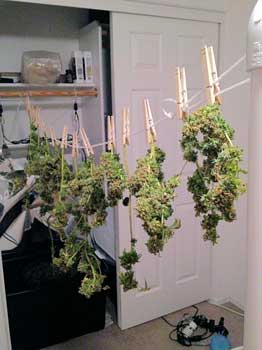 Don’t be afraid to start small if you’re not sure growing is right for you
Don’t be afraid to start small if you’re not sure growing is right for you- I wish I’d known that growing cannabis could be easy - maybe I wouldn’t have waited so long before I started
- Make sure you read up on the basics and some plant training techniques. Don’t do spur-of-the-moment experiments on your plants. At least google your idea first!
- Your plant will tell you if there’s any problems - as long as you’re paying attention to your garden and reacting to changes, you will make it to harvest and be able to enjoy your buds.
- Think about having a limitless supply of bud right in your home - that’s what helped me decide to make the leap
- If you’re ready to grow, just start growing!
Jump to...
7 Tips to Growing Top-Shelf Bud
How long until I harvest my buds?
7-Step Remedy to Fix 99% of Plant Problems



